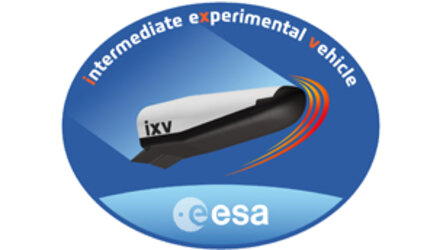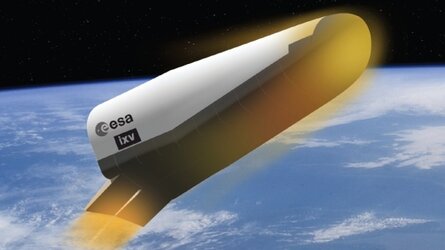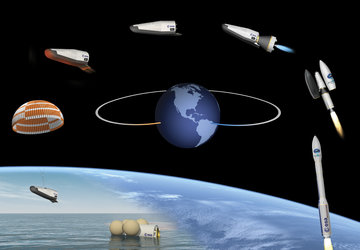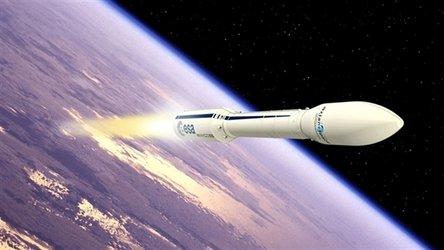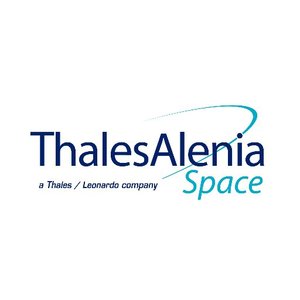IXV mission recap
The IXV project developed and tested in flight the technologies and critical systems for Europe’s future autonomous controlled reentry for return missions from low Earth orbit.
The experimental vehicle is 5 m long, 1.5 m high, and 2.2 m wide – about the size of a car – and weighs almost 2 t.
Launch and recovery
IXV was injected into a suborbital path by a Vega rocket launched from Europe’s Spaceport in French Guiana on 11 February 2015. IXV separated from Vega at an altitude of 340 km. It attained an altitude of around 412 km, allowing it to reach a speed of 7.5 km/s when reentering the atmosphere at an altitude of 120 km – fully representative of any return mission from low orbit. It collected a large amount of data during its hypersonic and supersonic flight, while being controlled by thrusters and aerodynamic flaps.
The craft then deployed a parachute to slow its descent for a safe splashdown in the Pacific Ocean to await recovery and analysis.
The complete mission lasted for approximately 1 hour and 40 minutes.
Mission operations

The Mission Control Centre at the Advanced Logistics Technology Engineering Centre (ALTEC) in Turin, Italy, closely monitored IXV during its mission. This facility was also in charge of coordinating the activities of the entire ground segment, including the fixed ground stations in Libreville, Gabon and Malindi, Kenya, and the naval station on the recovery ship in the Pacific Ocean.
Space and ground segment activities
| 2014 | ||
| May | IXV integration & qualification (Turin, Italy) | |
| Jun–Aug | IXV environmental tests (Noordwijk, The Netherlands) | |
| Aug–Sep | IXV flight & ground segments deployment (worldwide) | |
| 2015 | ||
| Jan–Feb | IXV ground segment launch campaign (worldwide) | |
| Jan–Feb | IXV flight segment launch campaign (Kourou) | |
| Feb | Launch, mission & recovery (Kourou) |
Applications for controlled atmospheric reentry vehicles
- Reusable launchers stages (lower and upper),
- Robotic exploration (for example, sample return from Mars or asteroid),
- Servicing of orbital infrastructures (for example, International Space Station),
- Servicing of future generation satellites (for example, in-orbit refuelling or disposal),
- Microgravity experiments (for example, optimum time/cost ratio),
- Earth sciences (for example, high-altitude atmospheric research),
- Earth observation (for example, crisis monitoring).















 Germany
Germany
 Austria
Austria
 Belgium
Belgium
 Denmark
Denmark
 Spain
Spain
 Estonia
Estonia
 Finland
Finland
 France
France
 Greece
Greece
 Hungary
Hungary
 Ireland
Ireland
 Italy
Italy
 Luxembourg
Luxembourg
 Norway
Norway
 The Netherlands
The Netherlands
 Poland
Poland
 Portugal
Portugal
 Czechia
Czechia
 Romania
Romania
 United Kingdom
United Kingdom
 Slovenia
Slovenia
 Sweden
Sweden
 Switzerland
Switzerland



























